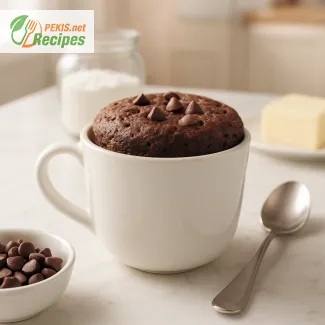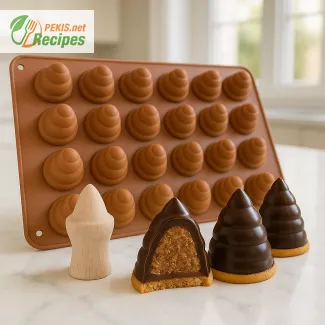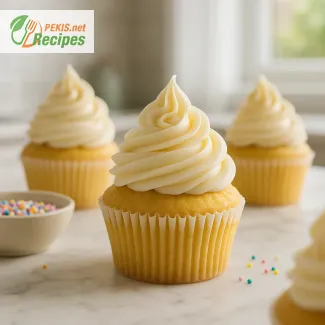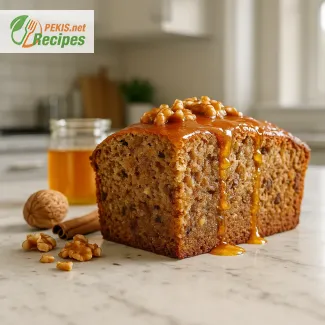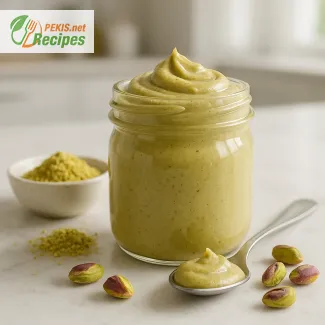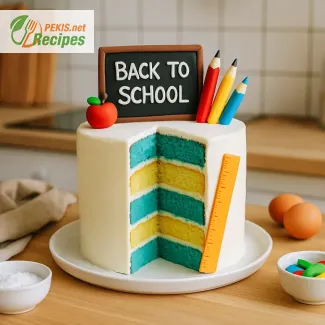
A colorful school-themed cake that brings joy to the first day back
Make your child's school year start with sweetness and celebration
The first day of school is a milestone many families cherish — a day filled with emotions, excitement, and new beginnings. Whether it’s your child’s very first time walking through the school gates or they're returning to a familiar classroom, this moment deserves a celebration. And what better way to mark it than with a fun and colorful cake inspired by school themes?
A First Day of School Cake isn't just a dessert — it's a memory in the making. From fondant pencils and edible rulers to vibrant chalkboard messages, this cake turns into a creative expression of learning and joy. It's a thoughtful gesture that shows your child you’re proud of them, and it brings the whole family together around something truly sweet.
Unlike generic celebration cakes, a school-themed cake adds personal flair and playfulness to the occasion. You can decorate it with your child’s name, grade, or favorite school subject. Whether you’re preparing it for breakfast as a cheerful send-off or for an after-school surprise, the impact is instant: smiling faces, laughter, and a snapshot-worthy moment.
Parents across the globe are making the shift from standard snacks to personalized cakes for back-to-school celebrations, turning ordinary days into extraordinary ones. These cakes often feature familiar motifs like apples, books, chalkboards, school buses, or notebooks — elements that spark enthusiasm and set a joyful tone for the year ahead.
Choosing the right flavor is part of the fun. From rich chocolate and moist vanilla to colorful funfetti, the base of the cake can match your child’s preferences. Bright frosting, bold colors, and handmade decorations using fondant or modeling chocolate make it visually striking. A school-theme cake is not just about looks — it’s also about taste. The combination of design and flavor is what makes this cake truly memorable.
When planning a back-to-school cake, consider making it part of a larger tradition. You could photograph your child with the cake every year to track their growth, or make baking it together a shared parent-child ritual. This way, the cake becomes more than a dessert — it becomes a symbol of encouragement and love as your child embarks on new academic adventures.
Adding simple, themed details can make a big difference. Think about topping the cake with miniature school supplies made of fondant, like colored pencils, erasers, or backpacks. You could pipe alphabet letters around the base or use an edible chalkboard to write a positive message like “You’ve got this!” or “Welcome to 2nd Grade!”. These playful details make the cake interactive and engaging for children, helping them associate school with joy and creativity.
Presentation matters. Serve the cake on a tray decorated with small school-themed props, colorful napkins, or even miniature apples for extra flair. Creating a festive corner in your kitchen or dining room helps set the mood for a happy school kickoff. Some families even prepare matching cupcakes or cookies to take along in lunchboxes, extending the celebration throughout the day.
This cake is also perfect for teachers looking to welcome their students back with a delightful surprise. A well-decorated cake in the staff room or classroom not only sets a positive tone but also fosters a sense of community. It’s a small gesture that goes a long way in building warmth on the very first day.
Whether you're a home baker or planning to order from a local bakery, the key is to keep it thoughtful, fun, and child-centric. The goal isn’t perfection, but emotion and connection. A few colorful sprinkles and a sweet message can make even a simple cake feel incredibly special.
The First Day of School Cake isn’t just a trend — it’s becoming a beloved tradition for families and educators alike. It signals that milestones matter, that beginnings are worth celebrating, and that the journey ahead is one filled with color, flavor, and love.
Creative ways to decorate a school-themed cake
Use fondant to shape miniature pencils, crayons, and apples
Fondant is versatile and easy to work with. You can roll, cut, and mold it into cute school objects that can sit on top of the cake or decorate the sides.
Create a chalkboard effect with black frosting and edible white markers
A dark fondant or buttercream surface can be transformed into a mini chalkboard. Add messages like "Welcome back!" or "Let's Learn!" for a unique, interactive feel.
Use letter stencils or alphabet cutters for personalization
Make the cake educational and fun by adding your child’s initials, their grade, or fun school-related words. This adds meaning and makes them feel celebrated.
Add school supplies as props around the cake table
Even if not edible, small items like rulers, colored pencils, or notebooks can enhance the cake presentation and tie in the theme.
Incorporate bright, primary colors
Use bold reds, blues, yellows, and greens to evoke the feel of classroom decorations. Kids are naturally drawn to vibrant colors, making the cake more appealing.
Match flavors with the mood
Chocolate for comfort, vanilla for a classic base, funfetti for celebration — align your flavor with the energy of the day. Include a surprise filling like jam or cream for extra excitement.
Use edible images or printed toppers
You can print school-themed designs onto edible paper for a professional look with minimal effort. It’s a simple way to make the cake look polished and unique.
This school-themed cake will not only light up your child’s face but also become a heartwarming tradition you look forward to year after year.
- Preheat the oven to 175 °C (350 °F). Grease and flour a 20 cm (8-inch) round cake pan.
- Sift the dry ingredients. In a large bowl, sift together flour, baking powder, baking soda, and salt.
- Cream the butter and sugar. In another bowl, beat the softened butter with granulated sugar until pale and fluffy (about 3 minutes).
- Add eggs one by one, beating well after each addition.
- Mix in flavorings. Add the lemon zest, lemon juice, and vanilla extract. Mix well to combine.
- Alternate adding milk and dry ingredients. Add half of the milk and mix, then half of the dry ingredients, and repeat. Do not overmix.
- Divide and color the batter (optional). If using food coloring, divide the batter into four bowls and add colors. Swirl gently or layer in the pan for a rainbow effect.
- Pour into the prepared pan. Tap gently to remove air bubbles.
- Bake for 30–35 minutes, or until a toothpick inserted in the center comes out clean.
- Cool the cake in the pan for 10 minutes, then transfer to a wire rack to cool completely.
Frosting preparation:
- Beat cream cheese and butter together until creamy.
- Add vanilla and gradually mix in powdered sugar.
- Add milk and beat until light and spreadable.
Assembly:
- Spread a thin layer of frosting over the entire cake.
- If desired, cover with fondant and add decorative school elements using fondant cut-outs or edible markers.
- Dust lightly with powdered sugar or add edible glitter for a festive finish.
Elevate Your School Cake Game with Creative Variations
Expert tips and ingredient swaps to enhance flavor, texture, and meaning
A classic first day of school cake is already a beautiful gesture to mark the return to learning, but with a few expert tweaks and intentional changes, you can turn it into something even more memorable. Enhancing a traditional school-themed cake isn’t about reinventing the wheel — it’s about subtle adjustments that elevate the taste, improve the texture, and deepen the connection to the occasion.
Enriching flavor through premium ingredients
One of the most straightforward ways to improve this cake is by switching from standard butter to cultured butter, which has a deeper, slightly tangy taste that adds more complexity to the sponge. Choosing pure vanilla bean paste instead of extract can dramatically improve the aromatic depth, giving the cake a rich, bakery-style finish.
If lemon zest is part of your base recipe, adding a touch of orange zest or a spoon of orange blossom water complements citrus notes beautifully and brings brightness without adding tartness.
For chocolate lovers, replacing part of the flour with cocoa powder and balancing it with extra sugar can create a school-themed chocolate version that still works well with colorful decorations.
Improving texture for a professional mouthfeel
To achieve a lighter crumb and more delicate bite, consider folding in whipped egg whites instead of adding whole eggs directly. This technique incorporates air and helps the batter rise more evenly during baking.
Substituting part of the milk with buttermilk can also tenderize the cake due to its acidity. It reacts with baking soda to create lift, resulting in a more moist and tender texture.
If you're baking for younger children, you might prefer a softer, more melt-in-your-mouth result. Adding sour cream to the batter brings moisture and a subtle tang that pairs wonderfully with fruit or vanilla frostings.
Making the cake more nutritious and allergy-friendly
To create a healthier school cake without compromising flavor, consider reducing the sugar slightly and using unsweetened applesauce for part of the butter or oil. This reduces fat content while preserving moisture and adding subtle natural sweetness.
Switching to a whole grain pastry flour or incorporating oat flour adds fiber and a mild nutty taste. Keep in mind that oat flour holds moisture differently, so balance it with eggs or yogurt for structural integrity.
For gluten-free versions, a 1:1 gluten-free baking mix with added xanthan gum is usually the most reliable substitute. Pair it with a stable base like almond flour for added richness.
If you’re avoiding dairy, use plant-based butter alternatives and frosting made with coconut cream or vegan cream cheese. Opt for natural food dyes made from spirulina, beetroot, or turmeric to maintain bright colors without synthetic additives.
Preventing common baking errors
The most common issue with school cakes is overmixing, which creates a dense, gummy texture. Always mix only until ingredients are incorporated, especially after adding flour.
Another pitfall is baking at too high a temperature. This may cause the exterior to brown before the inside is done. Always preheat the oven and use an oven thermometer to verify true temperature.
Uneven layering can ruin a visually striking school cake. Use a scale to divide batter evenly between pans and level each one before baking.
Fondant decorations should be added only once the cake is completely cool. Warm surfaces will cause melting or warping. Also, store finished fondant-covered cakes in a cool room — never in a refrigerator — to avoid condensation and stickiness.
Creative flourishes that elevate presentation and meaning
Instead of a single-layer cake, try baking in two thinner layers and filling the center with jam, chocolate ganache, or flavored buttercream. This adds surprise and textural variety.
Decorating with school-themed motifs doesn’t have to be cliché. Use custom fondant cut-outs with your child’s name or subject icons, or add a small edible chalkboard with an inspiring message.
Consider integrating a hidden message cake: carve out a cavity inside the sponge and fill it with mini M&Ms or confetti sprinkles. When sliced, the center bursts with color, surprising and delighting everyone.
If you want an even more personal touch, bake mini cakes or cupcakes with individual subjects or grade levels decorated on top — perfect for classrooms or family gatherings.
The value of baking at home
Homemade cakes are not only fresher, but they also allow total control over ingredients, allergens, and sweetness levels. They’re more affordable than custom bakery options and offer a bonding opportunity if children help with mixing or decorating.
You also avoid preservatives and can choose organic or seasonal ingredients for both health and flavor benefits. A freshly baked school cake carries the warmth of home and the care of someone who thought about the little details.
In a world where store-bought convenience often wins, taking the time to bake a cake from scratch — and even tweak it into something extraordinary — turns a simple tradition into a lifelong memory.
Allergens present in the recipe:
- Gluten (from all-purpose flour)
- Eggs
- Milk (butter, cream cheese, milk)
Substitution tips for allergens and gluten:
- Use gluten-free flour blend (1:1) in place of all-purpose flour.
- Replace eggs with chia seed gel (1 tbsp chia seeds + 3 tbsp water = 1 egg).
- Use plant-based milk (like almond or oat milk) and vegan butter/cream cheese for a dairy-free version.
Vitamins and minerals per serving (approximate):
- Vitamin A: 480 IU – supports vision and immune function
- Vitamin D: 10 IU – contributes to calcium absorption and bone health
- Vitamin B12: 0.3 µg – essential for nerve function and red blood cell formation
- Calcium: 80 mg – important for bone health
- Iron: 1.2 mg – supports oxygen transport in blood
- Magnesium: 12 mg – aids in muscle and nerve function
- Potassium: 120 mg – helps regulate fluid balance and blood pressure
Antioxidants per serving (approximate):
- Flavonoids: ~30 mg – may reduce inflammation and improve heart health
- Vitamin C (from lemon juice): 2 mg – supports immune function
- Carotenoids (from food coloring or lemon zest): ~0.5 mg – antioxidant role in cell protection
